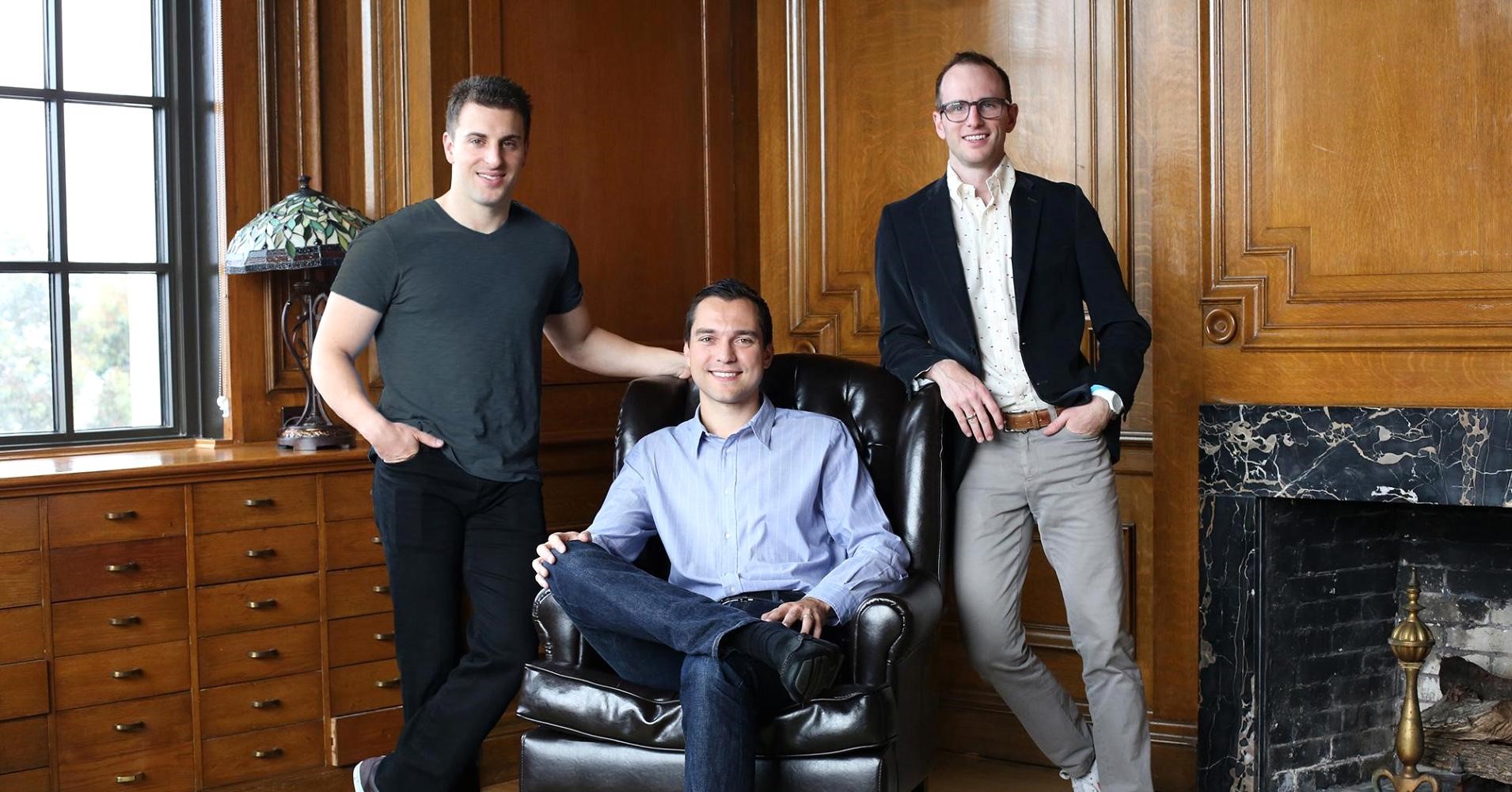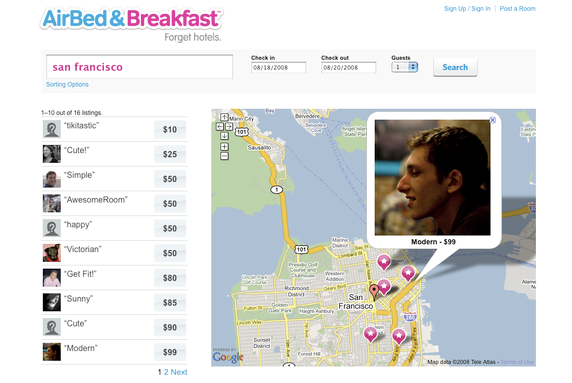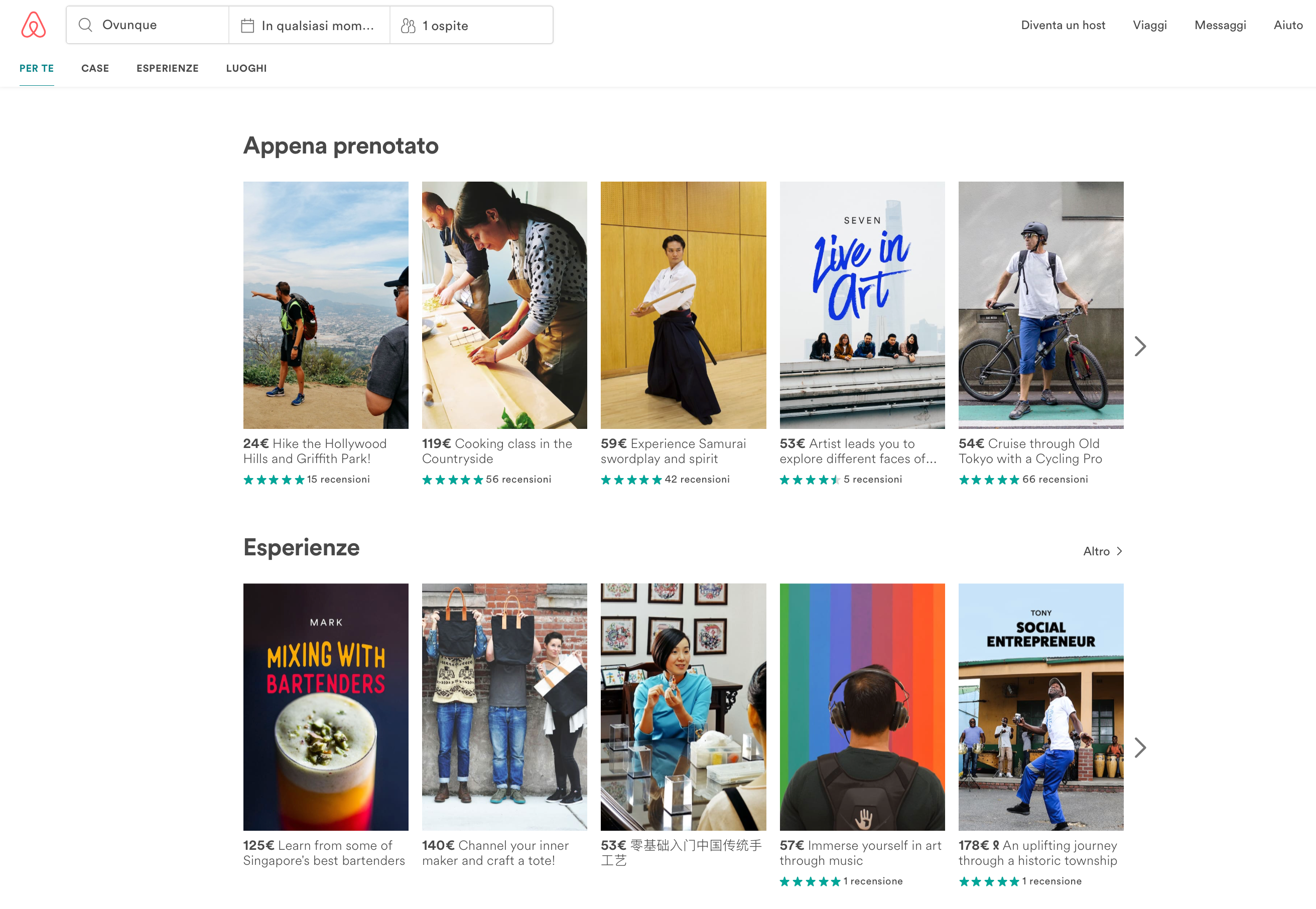Airbnb’s story teaches how to make “controlled mistakes”
As a manager or entrepreneur have you ever had cause to “I could have developed that innovation… If only I had perservered… If only I hadn’t been afraid of making mistakes…” ?
If you’ve thought this on at least one occasion, then don’t worry, you’re not alone. Other managers and business people have all felt the same thing.
Sometimes entrepreneurs and managers, when confronted with the risks associated with innovation together with the fear of failure, have preferred to not take those risks and remain where they are. Others, though, do not rest and leap into a series of detailed analyses and plans to attempt to predict the possible outcomes to the extent possible. Attempting to limit the possibility of failure, however can end up diverting the organisation’s energy and focus away from innovation and towards planning and seeking “justifications” for the choices and decisions made instead.
It is of little surprise, then, that the outcome of these approaches can be rather disappointing.
In his article "The Economy's Hidden Problem: We're Out of Big Ideas" Greg Ip, the Wall Street Journal's chief economic commentator, states that the rate of innovation has been steadily slowing over the past 10 years.

“With the exception of personal technology, improvements in everyday life have been incremental, rather than revolutionary. Houses and cars are still similar now to the way they were a generation ago. Airplanes do not fly any faster than they did in the 1960s. None of the 20 most prescribed medicines in America has been introduced to the market over the last decade. The decline in innovation is one of the main reasons why American living standards have stagnated since 2000. And with no reaction, this stagnation will probably continue, worsening the malaise that has left the middle class so unsatisfied”.
One of the main reasons for this reduced ability to innovate, in spite of the availability of increasingly sophisticated and refined tools and means, is linked to the decreased possibility for making mistakes.
“Innovation […] only occurs through trial and error, but society has become less willing to take risks”.
In fact, one of the key ingredients behind innovation is the ability to make mistakes and commit errors in order to learn and subsequently adjust your approach on your next attempt.
Several successful companies built on radical innovation are rooted in the past mistakes and attempts of their founders. Ford failed twice; first with the Detroit Automobile Company founded in 1899 and then again with the Henry Ford Company founded in 1901, before revolutionising and innovating the automotive industry with the Ford Motor Company; Walt Disney also saw his innovations and cartoons rejected, even the now legendary Mickey Mouse was rejected, who was judged at the time to be too scary for women – before Disney became recognised as an innovator and created the Walt Disney Company.
The old saying “learning from your mistakes” is therefore the path to go down for those who want to innovate.
But there is a real paradox at the heart of innovation: On the one hand, companies are frightened of making mistakes and attempt to limit them as much as possible through complex planning exercises; on the other, the need to make mistakes is a means of learning and refining significant innovations.
Is it possible to maximise the chances of an innovation’s success without getting caught up in the constraints of planning and leaving behind the possibility for people to make mistakes?
Is it possible to resolve this paradox? The case of Airbnb
Fortunately, the answer is yes! Some extremely interesting ideas on understanding how making “controlled mistakes” is possible can be taken from the history of Airbnb in the creation and development of a new service.
Airbnb was created in 2007 thanks to two young university graduates, Brian Chesky and Joe Gebbia. As they were regularly having difficulty paying their rent in San Francisco, Brian and Joe saw the opportunity to earn some extra money by renting a room in their home. In 2007, a large design conference was being held in the city and there was an expected influx of people with short-term accommodation requirements for the conference. Within a short time they were able to publish a temporary website advertising accommodation – one or two nights – called the “Airbed and Breakfast” service with a reminder that there was no actual bed in the room they were renting, just an inflatable mattress.

It is clear then that, at the outset, there was no particular idea to create a business. The idea of transforming this service into a real business came only later when they realised that there was an unsatisfied demand for no-frills accommodation, even in a stranger’s home, for one or two nights. Originally, Chesky and Gebbia offered basic accommodation and expected that the concept would be interesting only for new graduates like them, with little money to spend on hotels. However, among their first customers were a 38-year-old woman working at Razorfish and an industrial designer from Salt Lake City. This debunked any hypothesis they had made regarding the type of person interested in sleeping on an air mattress in the home of someone they didn’t know.
At this point the founders of Airbnb had not created any detailed plans and sophisticated hypotheses on how to evolve the business but chose an event and created a pilot project to test their new business venture.

They chose the South by Southwest (SXSW) music and film festival in Austin, Texas, which attracts more than 150,000 visitors, but the event organisers, not being enthusiastic about the concept of “Airbed and Breakfast”, rejected a partnership.
Without being discouraged, the three entrepreneurs responded by launching the second iteration of the Airbed and Breakfast site two weeks before the festival. They used local blogs and social media to publicise their accommodation services. They had enough beds for up to 80 people.
As an informal market test, Brian Chesky rented one of the apartments listed on the website. On one occasion, Brian carelessly forgot to pay his hosts in cash for a couple of days and this quickly cooled their warm hospitality. The episode however gave him an idea on how they could change their service. The company prioritised developing an advance payment system for bookings.
The benefits of this new feature were twofold, both for the guests and for the hosts. Guests were now able to pay for their stay in advance by credit card and thus avoiding hassles with the hosts regarding late payments.
The service was further improved with the introduction of two other features: an online booking system similar to that used for hotel bookings that allowed users to book a stay in someone’s home directly online and a review section where guests could see feedback about the accommodation, hosts and their overall experience.


However, without any extra special events, Airbed and Breakfast’s weekly revenue amounted to about $200 in the fourth quarter of 2008. Discouraged, the founders wondered if the time had come to throw in the towel. However, the upcoming presidential inauguration was expected to draw millions of visitors to the Washington DC area: this would be the real opportunity for Airbed and Breakfast. They were able to generate free advertising on the site and successfully completed 150 bookings.
Once the event was over, however, the company’s prospects still looked bleak: with the number of bookings fluctuating, the site was about to close.
The crucial decision to join Y-Combinator, a start-up incubator program located in Mountain View, California, was made in 2009.
During the 12-week program, Chesky and Gebbia were able to observe, measure, reflect and change many aspects of the service they were offering.
They changed the name of their site to Airbnb and decided to expand the business beyond offering accommodation at events. They focused on New York, always a popular tourist destination, and met with their users there, both guests and hosts. These interactions were very important because they allowed them to talk to people registered with the site, take professional photos of the spaces offered (to replace the old amateur photos that didn’t do justice to the quality of the homes) and in many cases to write new ads for the hosts’ homes.
After several trips and revisions they had put together an extremely solid and interesting portfolio of attractive spaces in New York, and this provided a critical mass and provided the opportunity to set up numerous standardised regulations.
Thanks to these continuous improvements, revenues began to grow to $400 a week. For the first time in 8 months the site was growing in spite of having no special event linked to their service. The $20,000 of funding by investors and Y-Combinator co-founder Paul Graham led to a further $600,000 in investment from a venture capitalist on the Demo Day at the end of the program.
Today, with a turnover of about $1 billion and a value of $30 billion, Airbnb connects people through authentic travel experiences, at any price point, in more than 65,000 cities and 191 countries.
Airbnb's story shows how it is possible to make "controlled mistakes".
3 basic principles
1. Do not get lost on useless plans: the market and the customers have all the answers.
Instead of building a detailed plan aimed at young, low-income travellers, Airbnb’s founders directly tested their hypothesis on the market and discovered that it was not backed up by reality. Even more mature people with more spending power were attracted by the idea of cheap, no frills accommodation.
When it comes to truly radical innovation, it is impossible to predict exactly how the market will react to a proposal. It is therefore unnecessary to dedicate yourself to concocting extremely detailed plans.
You need to clearly identify the underlying hypotheses of the business and test them on the market. Two hypotheses are particularly relevant for each innovation:
- value hypothesis: is my innovation valuable to a group of customers?
- growth hypothesis: will my innovation be able to grow on the market by funding itself?
2. Develop a Minimal Viable Product
But how can these hypotheses be tested on the market without the risk of going bankrupt? As suggested by modern Lean Innovation theories (see for example, Eric Ries’ “The Lean Start Up: How to Use Sustainable Businesses in Continuous Innovation to Create Radically Successful Businesses”) the biggest risk to innovation is spending all your available time and money on developing products and features that are of no interest to customers.
As seen in the Airbnb case, you do not have to fully develop your own product or service to test the business’ underlying hypotheses.
The first version of the “Airbed & Breakfast” site was a simple web page with some photos. It had no complex booking feature, no advanced payment management functionality.
With the minimum investment of time and resources (to minimize the risk of bankruptcy) they developed the so-called Minimal Viable Product, that is, the minimum version of the product needed to test the business’ underlying hypotheses.
The founders of Airbnb were therefore able to experiment and test their hypotheses at low risk and cost.
3. Measure and improve
But developing and launching a minimal viable product is not enough to maximise the chances of an innovation succeeding. It is also necessary to immediately define what information should be collected as a result of using the minimum viable product and how to proceed with the analysis in order to understand exactly what the value is for the market and to develop and integrate it into future versions.
You need to proceed with quick, successive test and learning cycles to rapidly develop the innovative solution without wasting energy and effort on full functional development that would add no value to what the customer sees.
When Airbnb’s founders decided to move to New York, they carried out several test-measuring and experimentation cycles, and this led them to progressively improve their innovation turning it into a global success story.
It is only in a structured test-measurement-improvement process that you can go wrong in a structured manner, developing the knowledge you need to carry your innovation to success.
Now that you have seen how it is possible to overcome the paradox of innovation, it’s your turn. Are you ready to take on the challenge of making “controlled mistakes”?
Article by:

Gabriele Colombo
Principal Lenovys
Gabriele has devoted and developed his skills, especially in the field of innovation, according to the logic of design-driven innovation by applying these concepts in the research and development departments of multinational companies. He has been responsible for defining, planning and implementing research and consulting programs related to the world of innovation and continuous improvement; he also brings this experience to his role as a lecturer of project management and innovation management at the Politecnico di Milano School of Management.


